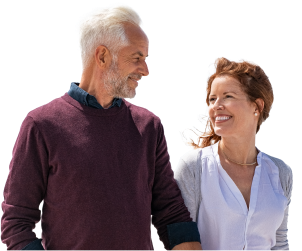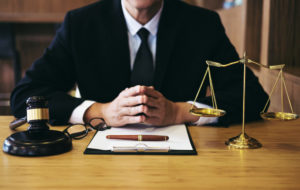In 2014, 4,884 pedestrians were killed in collisions with motor vehicles, while 726 bicyclists were killed in motor vehicle crashes. Additional statistics related to pedestrian and bicycle accidents include:
- In the state of Florida, pedestrian deaths surged in 2015, placing Florida as the second-worst state for pedestrian deaths.
- In 2015 the state of Florida had the highest number of bicycle fatalities of any other state at 0.57 per 100,000 people—more than double the nationwide rate.
- In a report released by the Governors Highway Safety Association, the increase in pedestrian deaths is attributed to the growing use of cell phones by drivers and walkers.
- Four states—New York, Texas, Florida and California accounted for 42 percent of all pedestrian deaths.
- Florida had the second highest rate of pedestrian deaths per capita, after New Mexico.
- Nearly 75 percent of pedestrian deaths occur after dark.
- A third of pedestrians killed had been drinking alcohol compared to about 15 percent of motorists.
- In 2014, 70 percent of pedestrians killed in an auto crash were male.
- About three of every four pedestrian fatalities took place in an urban area.
- Eighty-eight percent of bicyclists killed in bicycle/auto accidents were male.
- Seventy-one percent of bicycle fatalities occur in urban areas.
- About 19 percent of bicyclists killed in an auto accident had a BAC of 0.08 percent.
Bicyclist and Pedestrian Accidents—a Significant Problem in the United States
Accidents involving pedestrians and bicyclists are a significant problem in America, particularly in busy cities. Even though both walking and biking are healthy, cheap and environmentally-friendly modes of transportation and recreation, there are dangers involved. While pedestrians are assumed to have the right-of-way when crossing a street—particularly when in a marked intersection or crosswalk—the highest number of pedestrian accidents occur in these very places. Bicyclists are often hit in an intersection by a driver who is simply not watching out for anything other than another vehicle. The more congested and chaotic the area is, the greater likelihood of a pedestrian or bicycle accident, particularly among walkers and bikers who wear headphones, which may drown out the sound of a honking horn.
Parking lots are also the scene of many pedestrian accidents as drivers tend to zoom through parking lots as though the rules of the road don’t apply. Even though this type of collision generally happens at a lower speed, serious or fatal injury can still occur. If you are the victim of a pedestrian or biking accident, it is important that you contact an experienced Florida personal injury attorney as soon as possible. Collecting compensation under Florida law following a pedestrian or bicycle accident can be complex, involving a series of negotiations with insurance companies. A knowledgeable attorney will have the knowledge and the resources necessary to simplify the process and obtain the best results on your behalf.

The Perception Motorists Have of Bicyclists
The majority of people who travel only by car tend to believe, at least to some extent, that cyclists are a rather reckless group who take their lives into their hands every time they hit the streets, and don’t fully recognize the obvious dangers. The truth is, the occasional irresponsible bicyclist who throws caution to the wind, winding in and out of traffic and ignoring pedestrians and traffic laws is the exception rather than the rule.
Most cyclists are alert and respectful of the cars and pedestrians who share the road with them, and use caution and good judgment when they ride through traffic. More public education could go a long way in dispelling the misperceptions people have toward bicyclists, and more care and less distractions on the part of automobile drivers could greatly reduce the incidence of auto-bicycle accidents and fatalities. Most cyclists know to watch out for the distracted, negligent or reckless driver, not to mention swinging car doors and jaywalking pedestrians—not to mention road hazards—but it’s simply not feasible to anticipate every single possibility.
 We’re here to serve you. Our phones are open 24 hours a day.
We’re here to serve you. Our phones are open 24 hours a day.
Where Do Most Bicycle Accidents Occur?
Although the majority of bicycle accidents happen in those cities with the highest populations, college towns rank higher than their population would suggest. Many college students use bicycles as their primary mode of transportation; it’s healthy, it allows them to quickly get from one class to another, and it saves money—something most starving college students appreciate. While about 71 percent of fatal bicycle crashes occur at non-intersection locations, for non-fatal bicycle crashes more collisions occur at roadway intersections. Roads with narrow lanes, no shoulders and higher speed limits make up a large number of bicycle accidents which result in serious or fatal injuries to the bicyclist.
 We’re Florida’s top litigation team with over 75 years of combined experience
We’re Florida’s top litigation team with over 75 years of combined experience
How Drivers Can Help Reduce Accidents
Drivers must first and foremost realize that bicyclists are entitled to the exact same rights—and have the same responsibilities—as auto drivers. Drivers need to drive at safe speeds and exercise caution in city situations when traffic is heavy. They should also avoid distractions such as cell phone use or consulting a map while driving, and should be especially alert for bicycle riders before they back out of a driveway, make a turn in an intersection, or open their door into oncoming traffic.
 From the initial call to updates on your case status, we are here to get you answers.
From the initial call to updates on your case status, we are here to get you answers.
How Bicyclists Can Help Reduce Accidents
Whether you are a serious cyclist or simply ride your bicycle for exercise whenever possible, you are likely well aware of the potential for a bicycle accident, particularly in heavily congested areas. After all, when a 3500-pound (or larger) vehicle comes into contact with an unprotected bicyclist, the results can be grim. Even when you are extremely safety-conscious, obey all traffic laws, take every necessary safety precaution and are always alert and aware of your surroundings, you can still end up being seriously injured by a driver who is not paying attention. Many drivers either refuse to share the road with bicyclists or are driving while distracted (although most drivers involved in a crash will not admit to being distracted, it is estimated that between 40 and 50% of all auto accidents are caused by driver distraction).
Who Is Responsible for Your Pedestrian Accident?
It may be necessary to have the scene of the accident re-created, as well as obtaining witness statements in order to determine whether the driver of the automobile was responsible or whether the walker or bicyclist was responsible for the accident. In most cases, the driver of the automobile is found to be at fault, whether through driver error, negligence or because they failed to exercise proper caution when backing out, changing lanes, going through an intersection or entering a roadway. A pedestrian may have ignored a traffic control signal, jaywalked in a particularly busy location, or a child may have unexpectedly run across a road. Drivers may also disregard traffic control signals, fail to yield to a pedestrian in a crosswalk or intersection, pass a stopped school bus, or could be engaged in other activities while driving.
Distracted drivers can hit pedestrians or bicyclists, as well as other drivers. In our busy society, multi-tasking is more and more common, and has even spilled over into driving. We eat entire meals behind the wheel, change radio stations, turn around to look at the children in the back seat, talk or text, talk to passengers, or watch what’s happening on the side of the road. All of these extra activities can lead to tragedy, particularly when a driver is so engrossed in another activity he or she fails to see the cyclists or pedestrian.
Potential Damages in Your Bicycle or Pedestrian Accident
As with most accidents, the exact circumstances surrounding the accident will determine the damages the injured party is entitled to. In most cases, the negligent party will be responsible for your medical expenses, including doctor bills, hospital bills, rehabilitative therapy expenses and prescription drug expenses. If you were off work because of your injuries, you may be entitled to lost wages, and if you will never be able to return to your job, you could be entitled to future lost earnings. Pain and suffering are usually included in your damages, if applicable, and in some cases you may be entitled to mental anguish, loss of consortium and punitive damages.
How a Florida Personal Injury Attorney Can Change the Outcome of Your Accident
Having a highly skilled Florida personal injury attorney by your side immediately following your bicycle or pedestrian accident can enable you to recover equitable compensation for your medical expenses, pain and suffering, and any other losses incurred as a result of your accident. Following your pedestrian or bicycle injury, there are certain steps you must take in order to qualify for compensation. Due to Florida’s personal injury protection laws (no-fault), you will not be able to file suit against the negligent party until PIP benefits have been exhausted.
Following the exhaustion of those benefits, an attorney from The Law Place can explain the process should you choose to file suit against the negligent party for remaining damages. Because PIP insurance only covers up to $10,000 in medical expenses and lost wages, pedestrians injured by an automobile are very likely to exceed that amount quickly. Florida’s statute of limitations is four years from the date of your accident. While this may sound like a long time, you would be surprised how quickly the time can pass, therefore contacting an attorney from The Law Place very soon after your accident is even more critical.
An attorney from The Law Place will assemble all evidence substantiating your claim against the negligent driver. Witness statements will be collected, the driving history of the driver responsible for your injuries will be investigated and, if necessary, the scene of the accident will be re-created. You deserve an advocate by your side who has your best interests at heart and will fight for your rights. Call The Law Place today at 941-444-4444. “We are here for you.”




